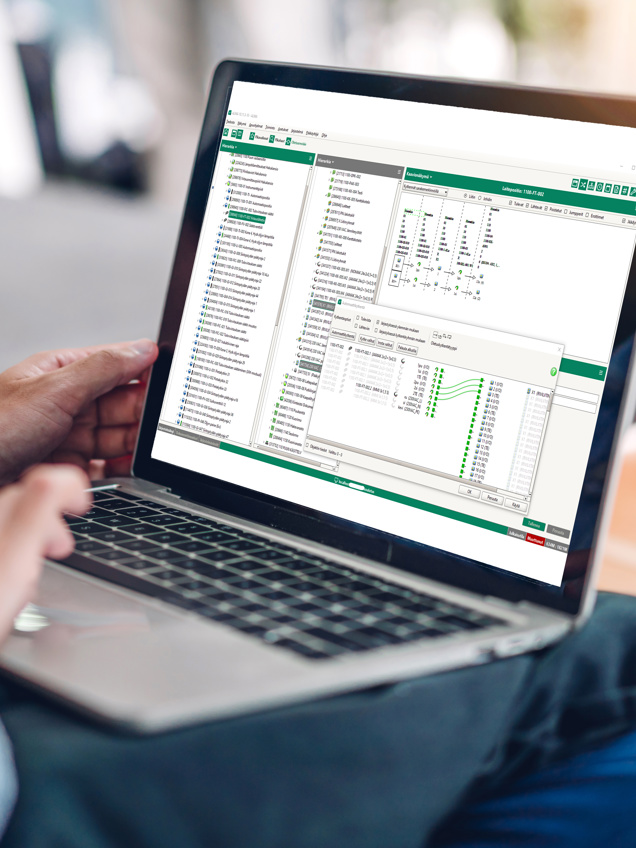The features of FieldALMA
Electrical design
Electrical design focuses on the design of various electrical systems, for example, power trains and the connections of motor and electrical resistance trace heating circuits. Its objective is the implementation of safe, efficient and functional electrical systems.
Comprehensive libraries and automated functions for examination and creation of connections are at the designers’ disposal.
Electrical design covers all switchboards of the facility, as well as electrical circuit and board output design for the control of motors and electrical resistance trace heating, for example. The constituents of electrical circuits and outputs are determined based on the selected types (circuit type, selection table), so that their electrical characteristics correspond to the power class chosen. This reduces the possibility of design errors, improves safety and enhances efficiency.
The electricity distribution network can also be modelled into the system. The modelling may include, for example, documentation, power transformers, medium voltage switchboards and cells, transformers, compensation units, ballasts, cables, etc.
After the modelling, estimating the impact of various possible failures on the electricity grid, switchboards, and production equipment is facilitated. The model also enables reality centred maintenance (RCM) criticality classification related to the electricity distribution network and helps to prioritise maintenance tasks accordingly.
With FieldALMA, an electrical designer can:
● control the facility’s power supply
● create standard motor circuits; power and RPM from minimum to maximum
● create conceptual products, actual products and drawings
● utilise product and cable libraries alongside automatic choices
● create motor lists with the help of standard solutions
● connect the motor to the MCC and reserve the necessary I/O-s
● share completed design data in the form of drawings and diagrams
● reserve a bus/IP address and connect a frequency converter or motor controller to a bus/switch
● create different types of motor circuits (e.g., VFD, DOL, REV-DOL, ELTR) using design and base types or solution models created in advance


